We use cookies to maximize your online experience with us. By closing this window, you consent to our cookie policy. You can change your cookie settings in your browser any time. For more information, please see our Privacy Policy located on the footer of this site.
Why We Miss the Office
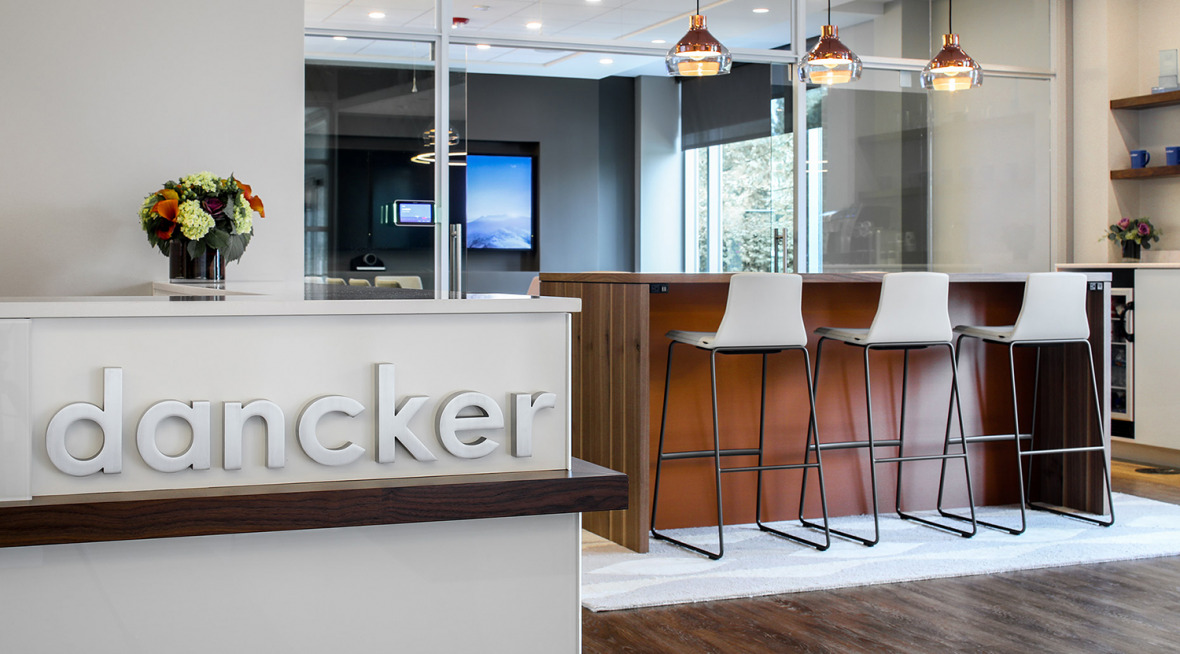
Now that a large percentage of the workforce has been required to work from home because of the Coronavirus pandemic, many of us are wondering – since employees have proven that they can effectively and efficiently work from home, do we even still need an office?
The answer is yes…and it involves all the things we’ve been acutely missing as we work from home, and more.
COLLABORATION + COMMUNICATION
The office not only allows for, but encourages, spontaneous collaboration that is simultaneously convenient. It’s why so many organizations have been making the switch to the open office for years – it encourages interaction among coworkers, helping them engage and collaborate with one another.
Here at dancker, an overwhelming 80%+ of our employees selected face-to-face interaction with our coworkers and teammates as what they miss about working in the office.
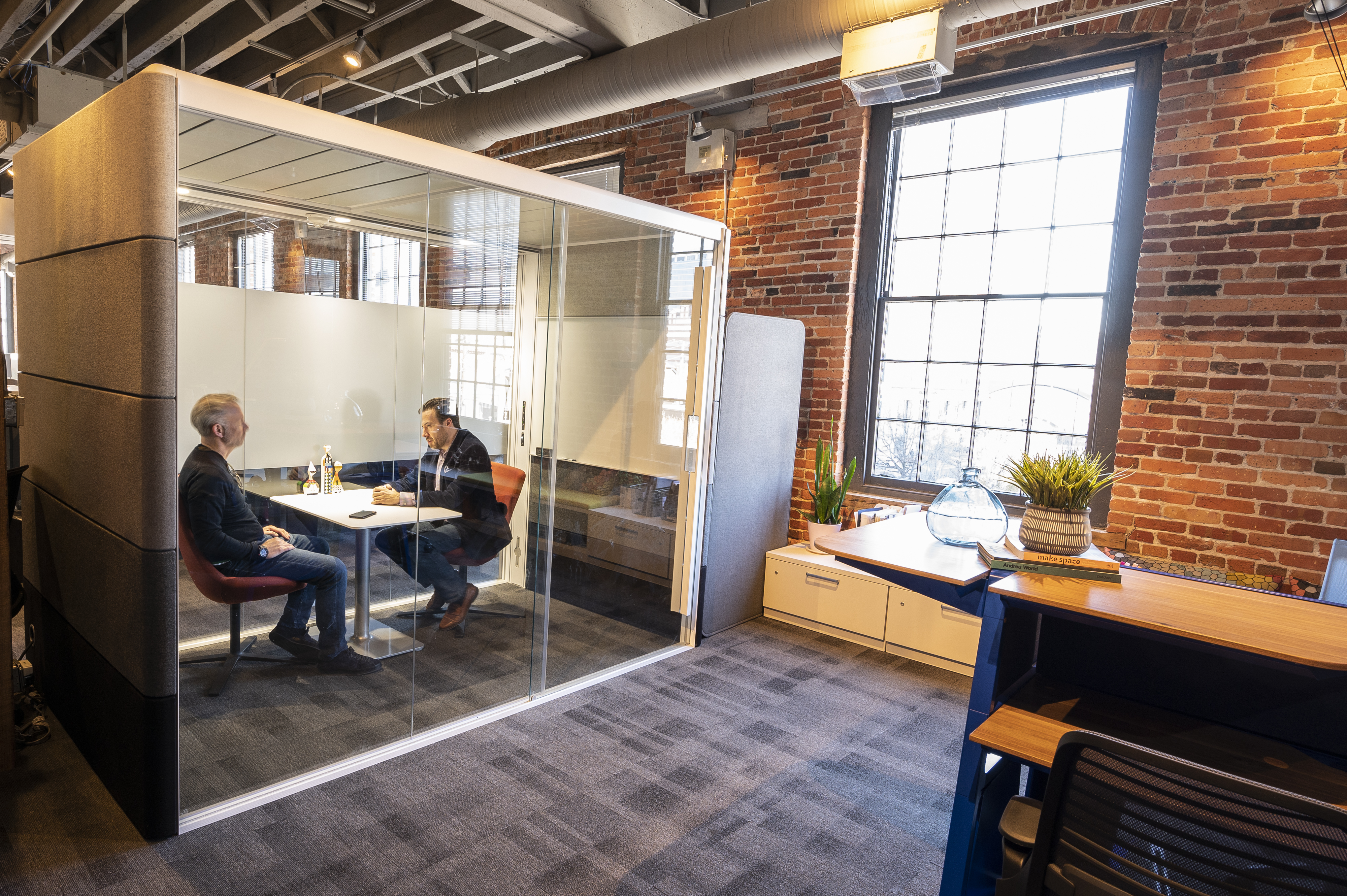
Communication is clearer in person. Reading someone’s body language and picking up on other visual cues is easier when we’re in the same room as another person. On screen, cameras only give us a small glimpse of someone – their face, maybe their shoulders, and if we’re lucky, not up their nose. Cameras also make it difficult to experience eye contact. On video, we’re always staring at the person’s image, positioned well below the camera of our personal devices. This makes it almost impossible to feel like you’re ever making real eye contact with them, and is one of the reasons why a large number of video calls can bring on fatigue.
PRODUCTIVITY + FOCUS
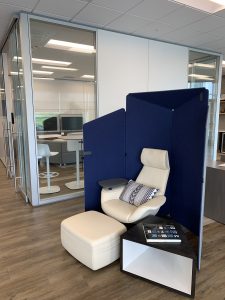
Some people need the buzz of an office space to feel motivated and experience improved productivity. They crave moving from space to space for meetings and feel more energized and inspired when they’re surrounded by their like-minded colleagues who are also working towards a common goal.
There will never be ‘no distractions’ when it comes to work, but depending on where you’re working, the type of distractions will change. An office provides people with a place where TVs, ringing doorbells, spouses and children can’t regularly interrupt focused work. We found that 34% of our people are finding interruptions to be challenging while working from home.
Some people are simply more productive in the workplace, which is perfectly okay. We all need different resources and tools to help us work our best – including an office space.
BRAND + CULTURE
We feel connected to our company’s culture when we are in an office space that was thoughtfully designed to reflect the company’s mission and ideas. When we look around, we see how our role fits into the whole of the larger organization and are reminded that our work is meaningful and valuable.
Many employers have recognized the need to provide employees with an experience upon arriving at the office. Incorporating relaxation rooms, game rooms, gyms, cafeterias and more turn offices into “sticky campuses”, where employees feel more connected not only to their space, but also their work. When everything they need is on hand, employees can worry less, and focus more.
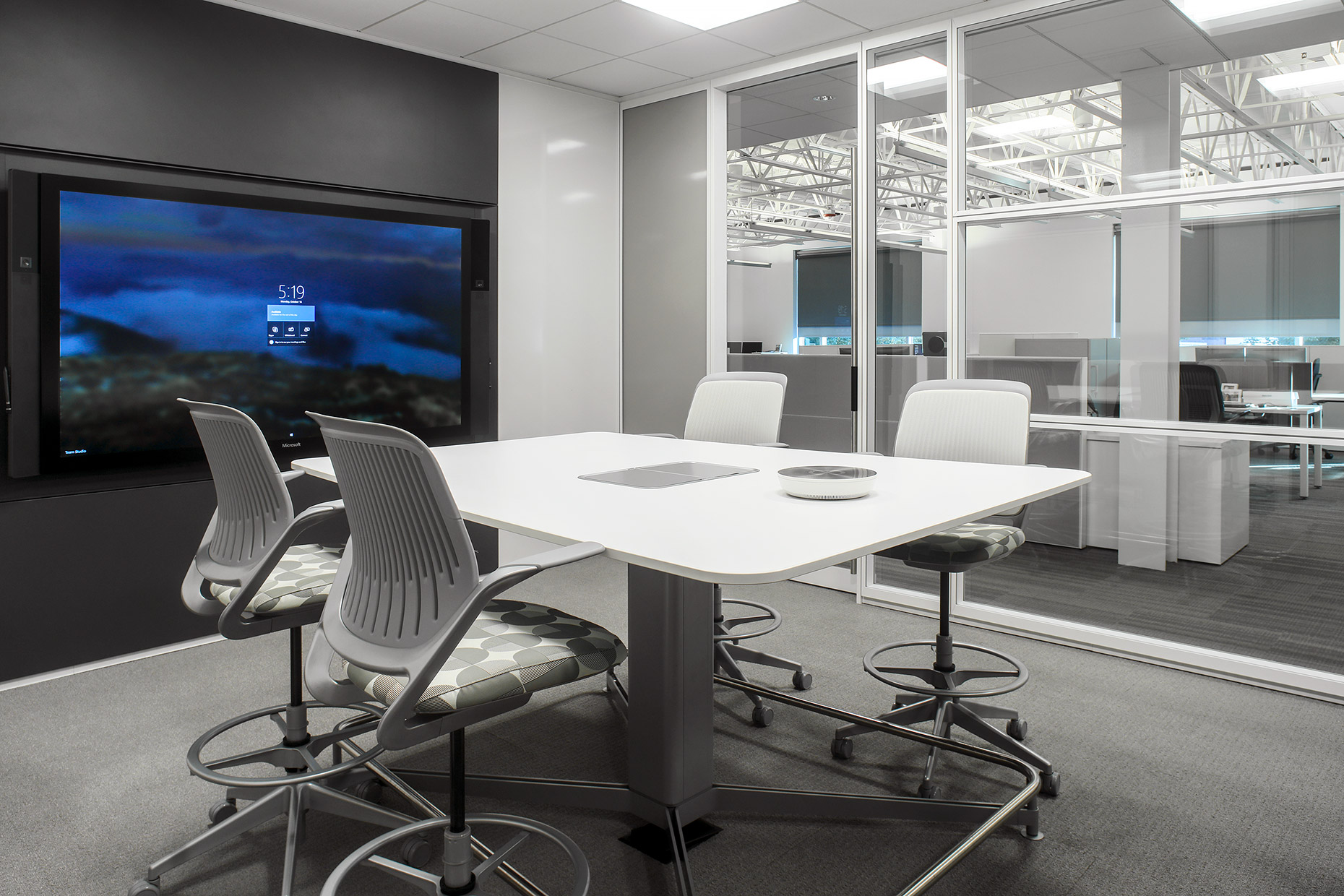
SPACE + RESOURCES
Private offices, huddle rooms, personal workstations, lounge areas. There are so many different types of spaces, many of which employers have begun incorporating into their offices over the last few years to provide employees choice and control over where and how they work. The office provides us with the chance to choose what’s going to best support us in the moment to complete our task.
For many of us, our work setup is much more complete at the office. Companies invest in furniture and tools that help us be more productive – height-adjustable desks, task chairs, additional monitors – items that we don’t necessarily have access to elsewhere. Purchasing these items on our own is an investment, and that can only be done if you have the space in which to put them. Not everyone has an extra room or closet that can be converted into an office, which can lead to a lack of clear delineation about work hours vs. personal time.
In the office, we have access to printers, copiers, the mail room, resource libraries and more. When we aren’t there, we can’t reference items to answer a question, or walk over to the printer to grab paper copies to review documents more thoroughly. Worktables allow us to spread out materials that we need to look over, without worrying about papers falling off or not having enough space to do so.
Our teams miss having printers, plotters, and copiers as tools to use when working on projects for our clients, as well as completing internal tasks.
Digital and analog tools play an important part in supporting our work. Whiteboards help us collaborate with team members as we generate new ideas and jot them down. Presentation, audio and video conferencing systems let us connect with people in the room and beyond. Faster Wi-Fi or wired connections ensure we stay connected while we are working.
PHYSICAL + MENTAL HEALTH
While many of us are required to work from home to keep ourselves and others safe, some may be experiencing feelings of isolation. When we aren’t around other people, we can feel lonely and unmotivated. We can forget that we are a part of a team and have colleagues who are also working on solving difficult and challenging problems for our clients. We don’t always remember that we are not alone. In the office, we are less likely to feel isolated as we have a chance to see familiar faces and connect with others.
In the office, meetings aren’t taken from our desks; we get up and move. We walk down the hall, or up and down the stairs when we need to attend a meeting. Even a short 30 second walk provides us with health benefits as we stand up and stretch our legs. When we need to ask colleagues a question, we have the opportunity to stand up and go over to their desks instead of staying seated and simply calling or messaging them.
Almost 30% of us miss being able to get up and walk to a meeting.
Having a physical office helps delineate between work and personal time. When we arrive at the office, our brains recognize we’re at work and it’s time to focus on accomplishing tasks for the day. Leaving the office can send the signal that it’s the end of the workday, and it’s time to focus on personal things that we might want or need to accomplish. When we don’t “shut down” for the day and continue working late into the night, or on the weekends to make up for ‘lost time’, longer hours can lead to higher stress levels and burnout.
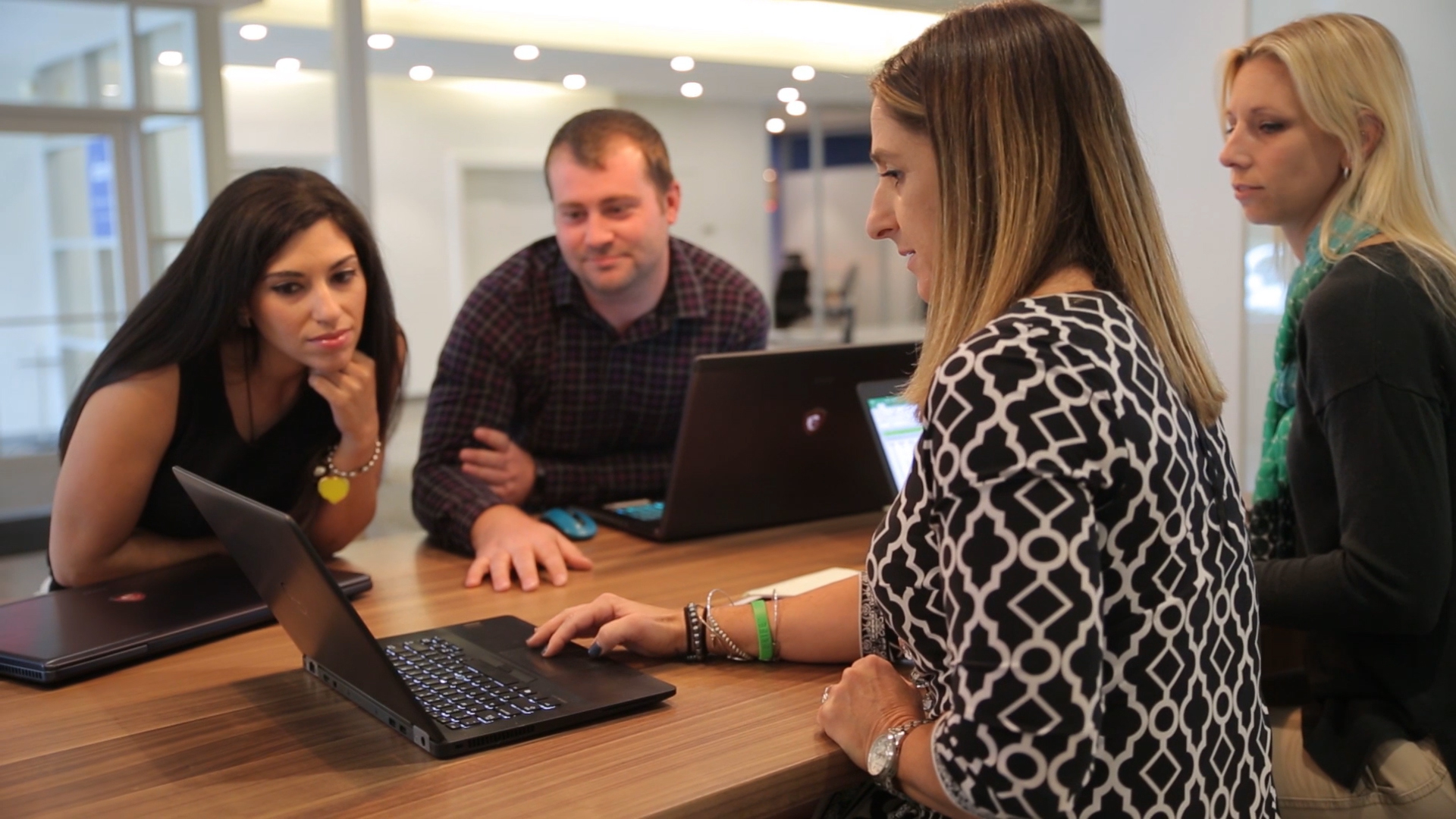
SOCIAL
As human beings, many of us crave social interaction and being with other people. We want meaningful relationships, and it’s easier to build camaraderie in the office. When we’re in the workplace, casual conversations and interactions happen on a regular basis any- and everywhere: at the coffee machine, in the cafeteria, passing one another in the hall. This doesn’t happen when we’re behind a screen – it takes more of an effort to catch up with colleagues and learn about each other’s lives.
We’re also more likely to interact with people outside of our own departments when we’re in the office. We don’t randomly bump into people on messaging or video chat platforms. Those connections are deliberate, whether it’s a planned meeting, or a call to ask a question. These unplanned interactions can spark new ideas and solutions for problems we’re trying to solve, as we gain new perspectives from people who are working on other projects.
The office might change when we go back, but it isn’t going away. Coming together will be reserved for special, important situations, where creating and nurturing relationships will be a focus.
Explore our spaces via virtual reality here:
